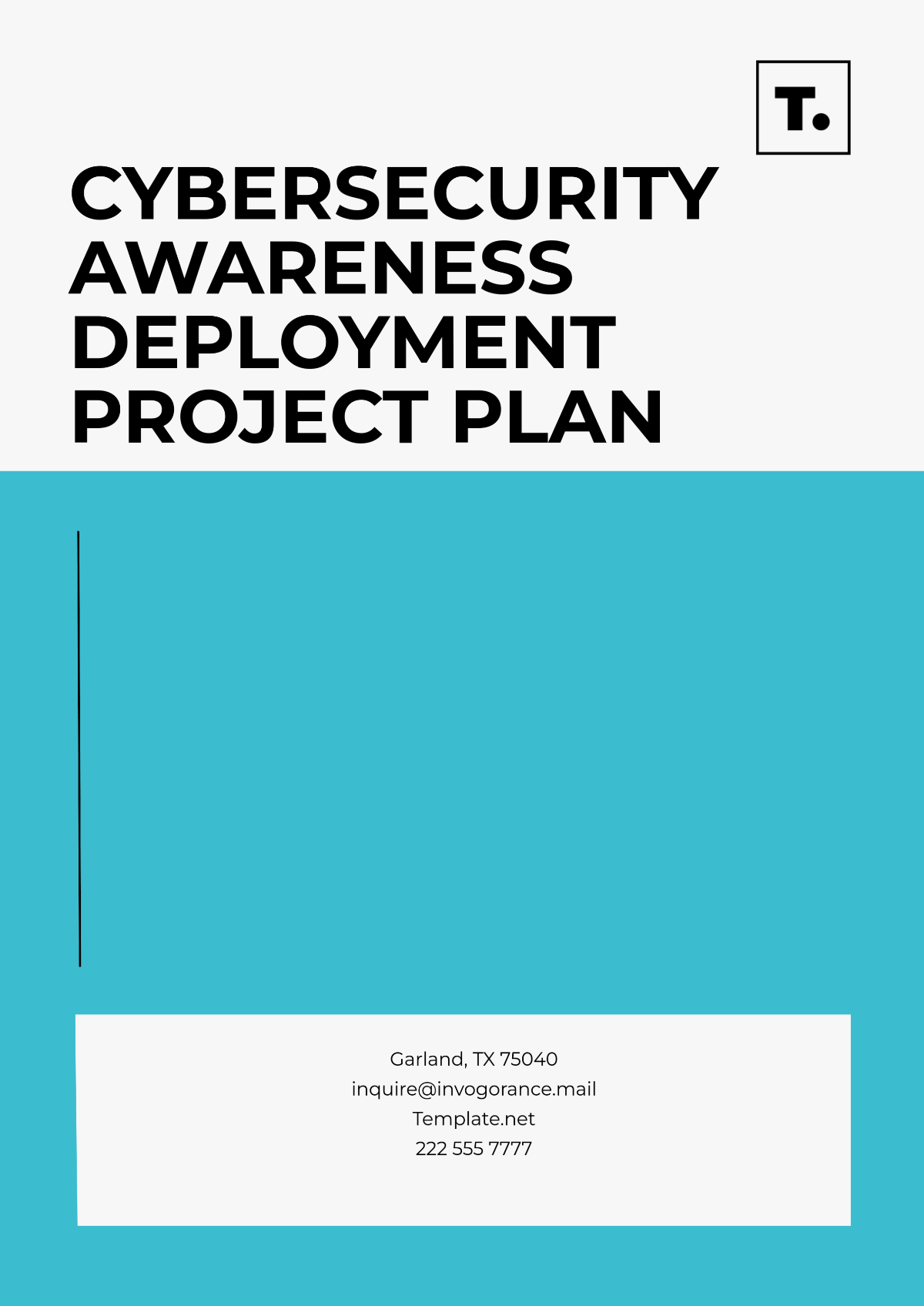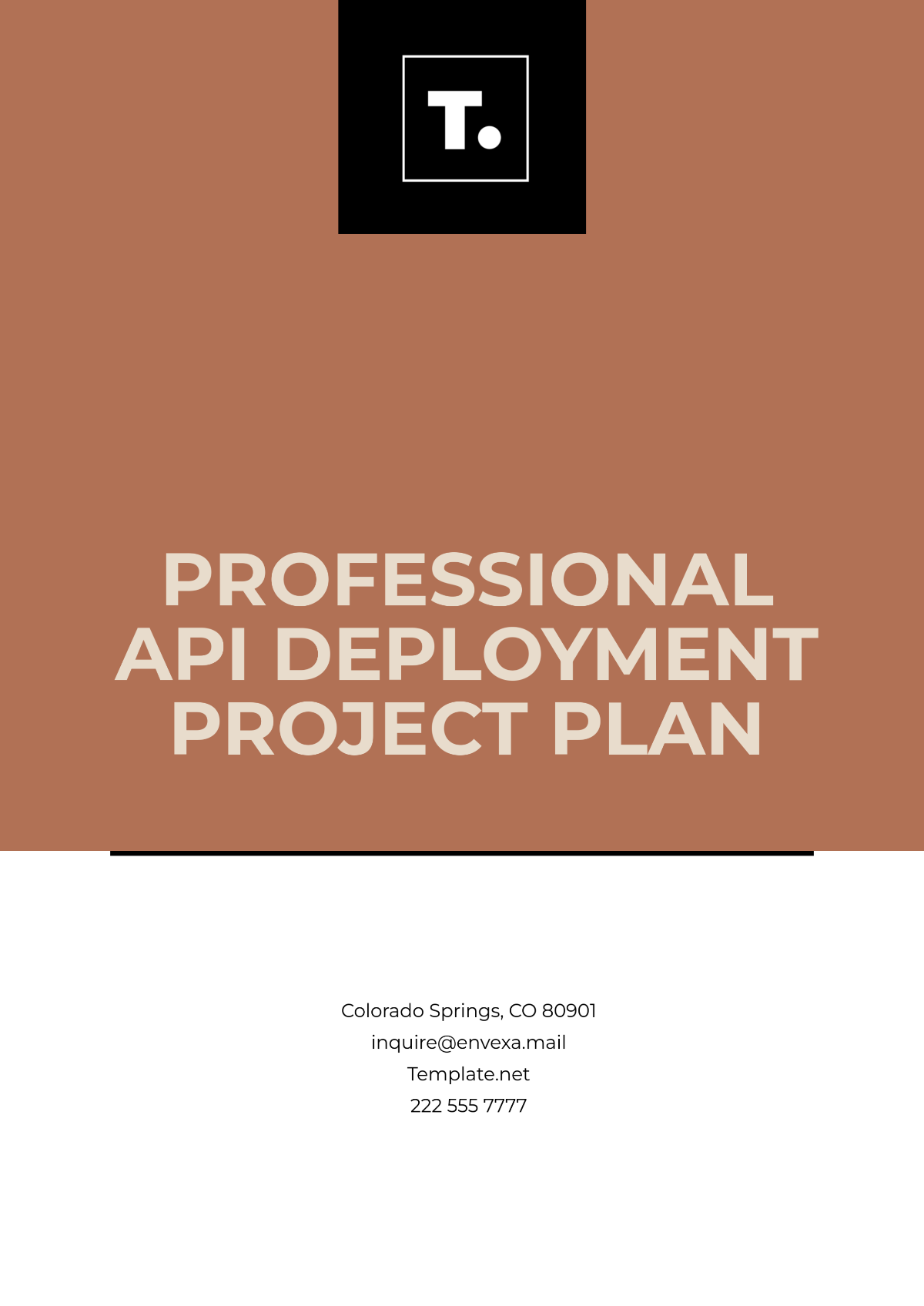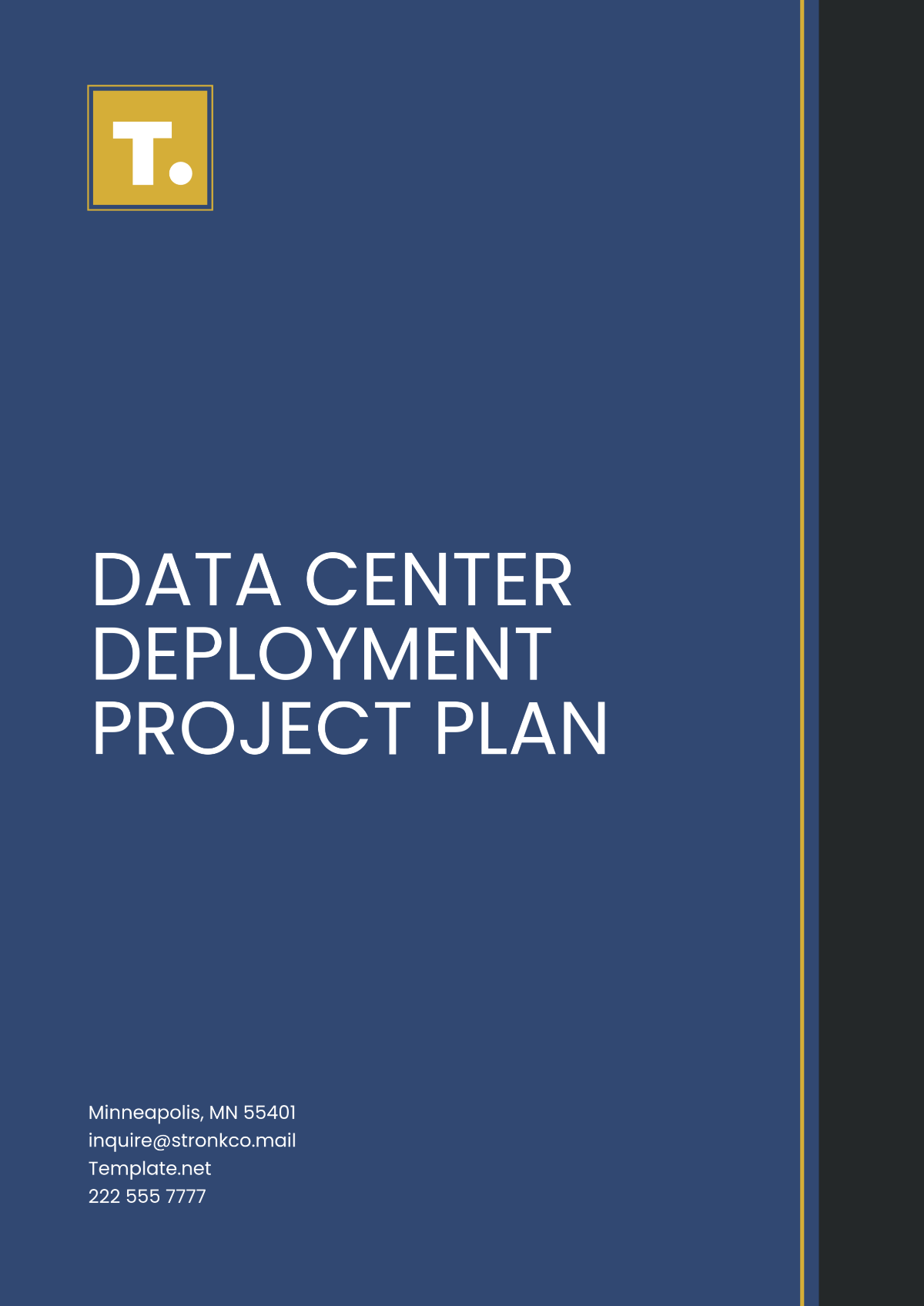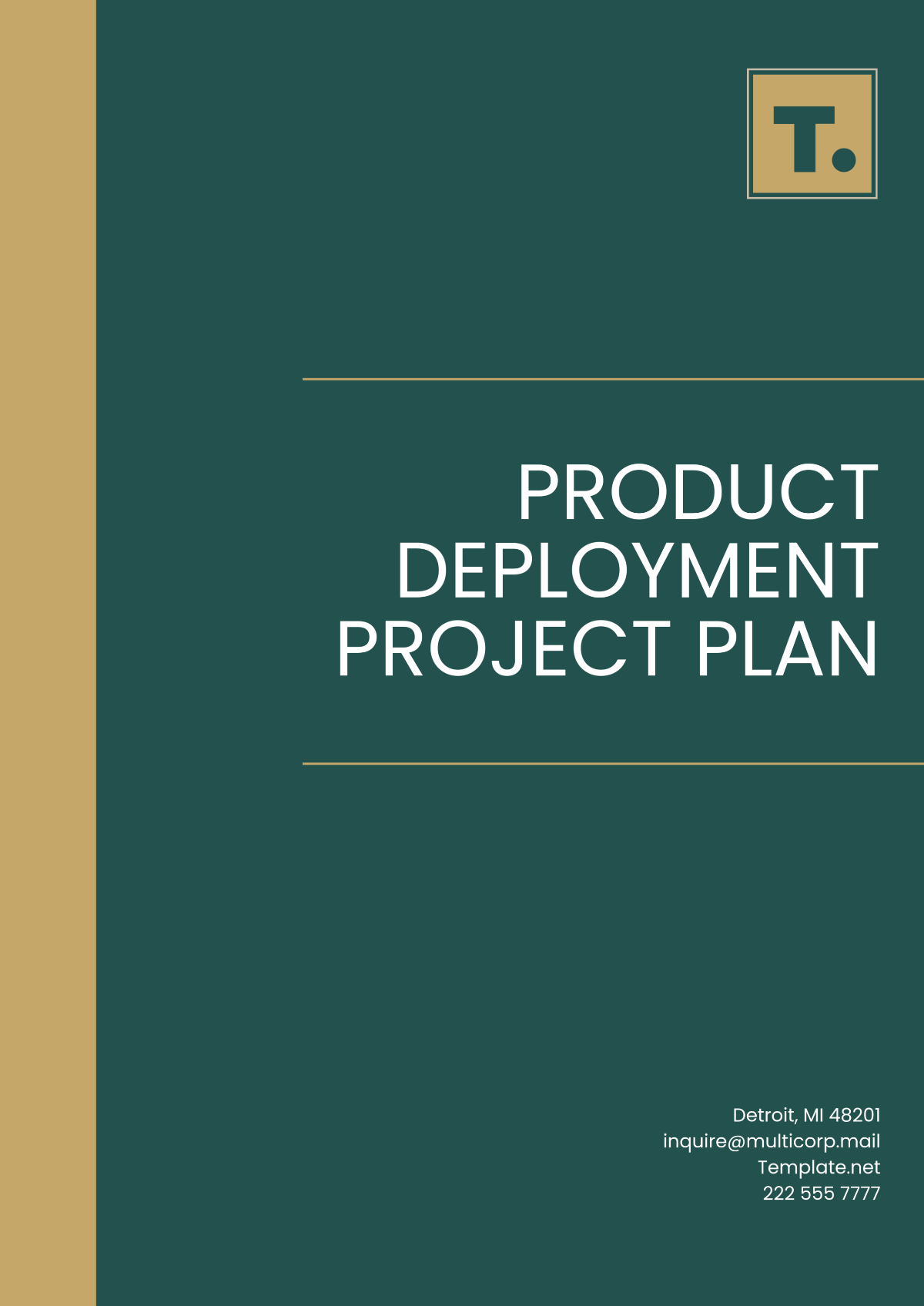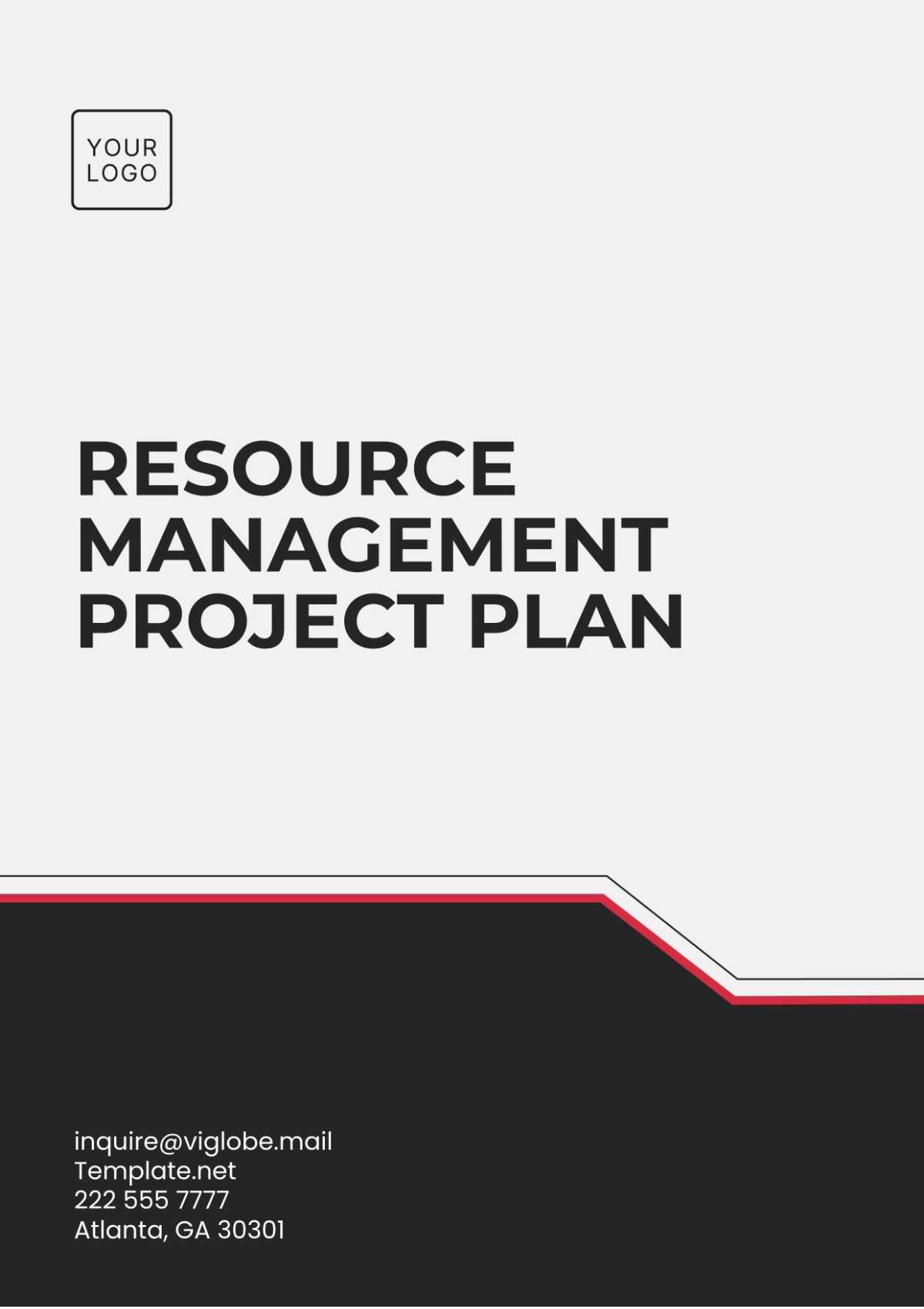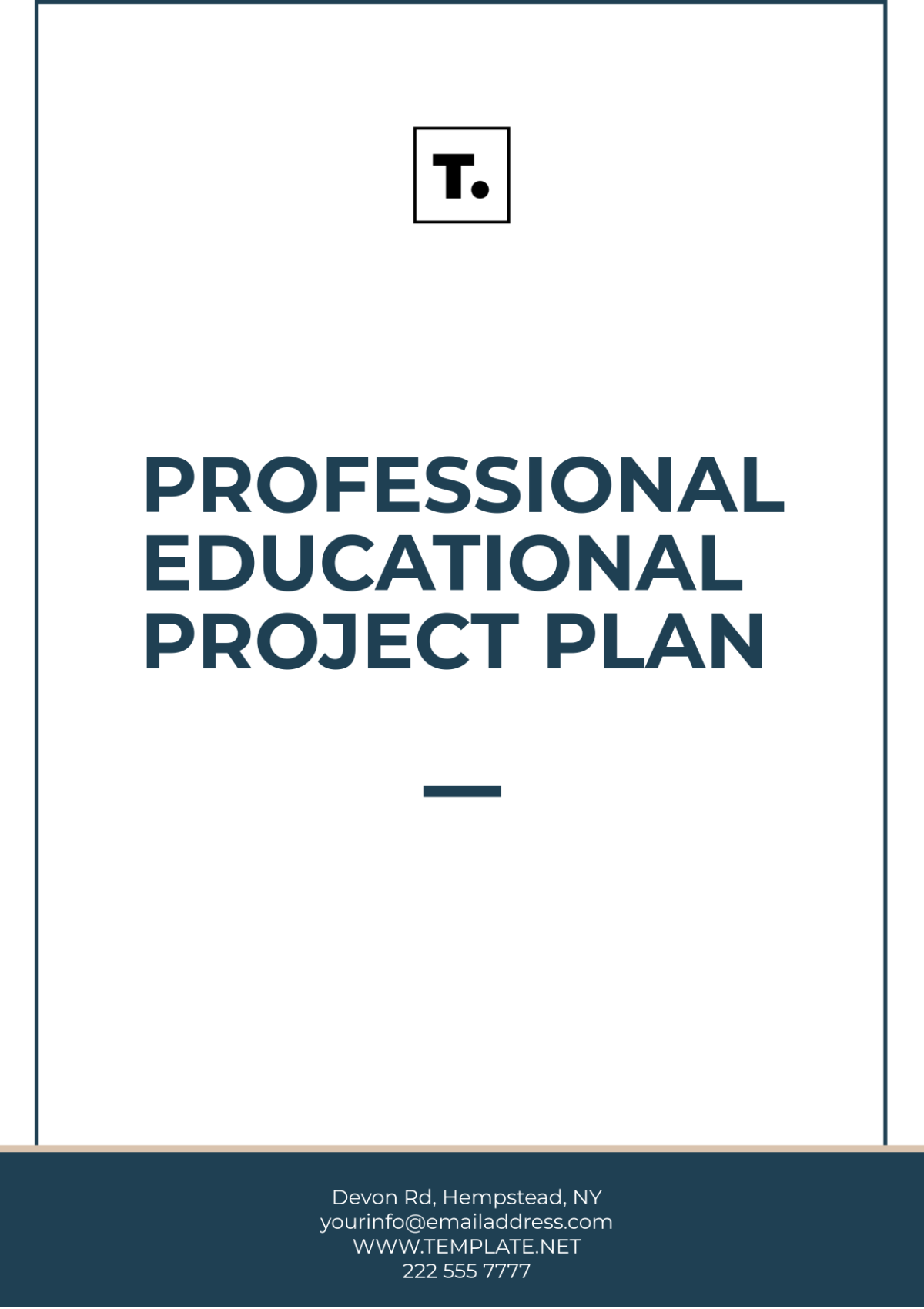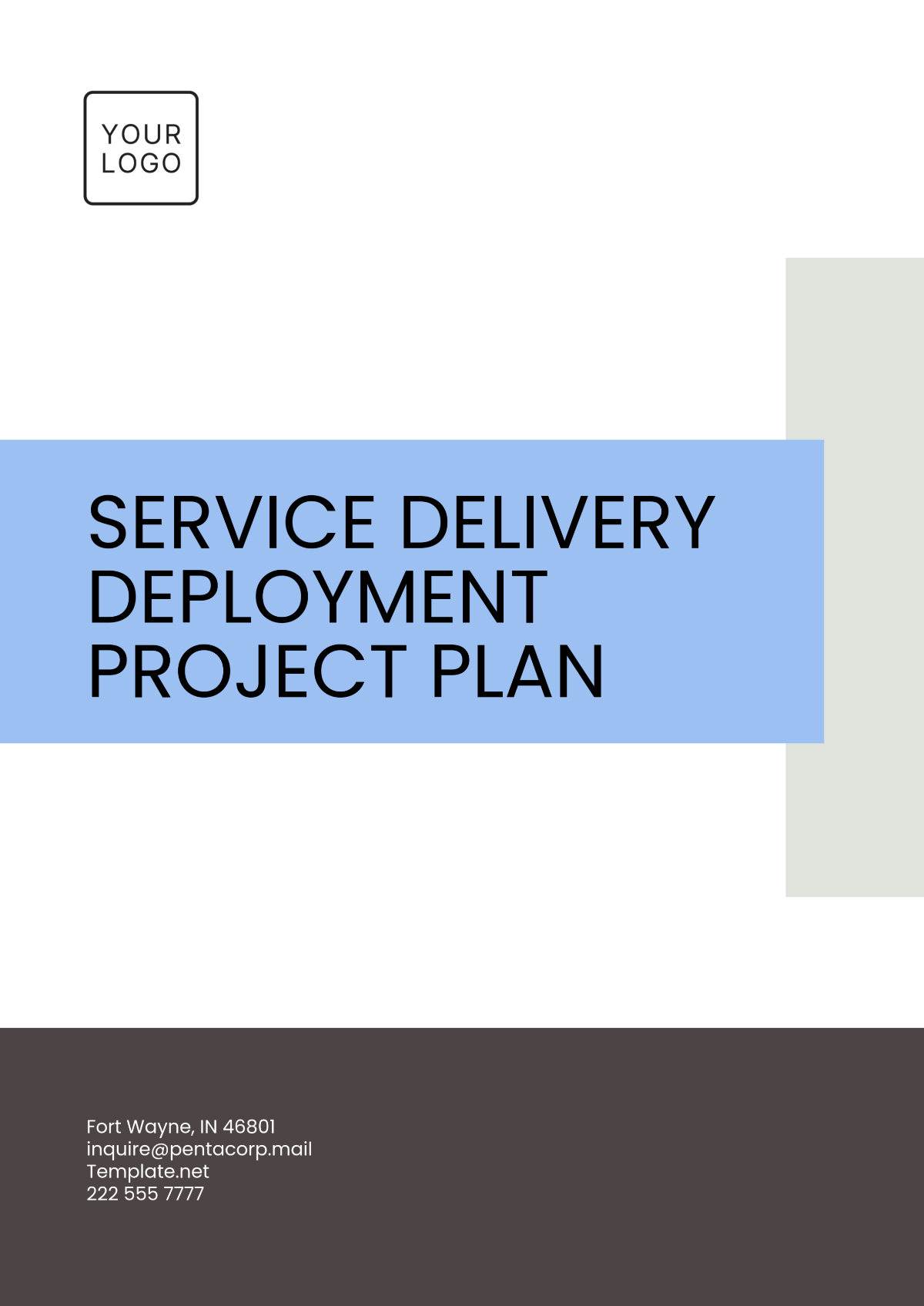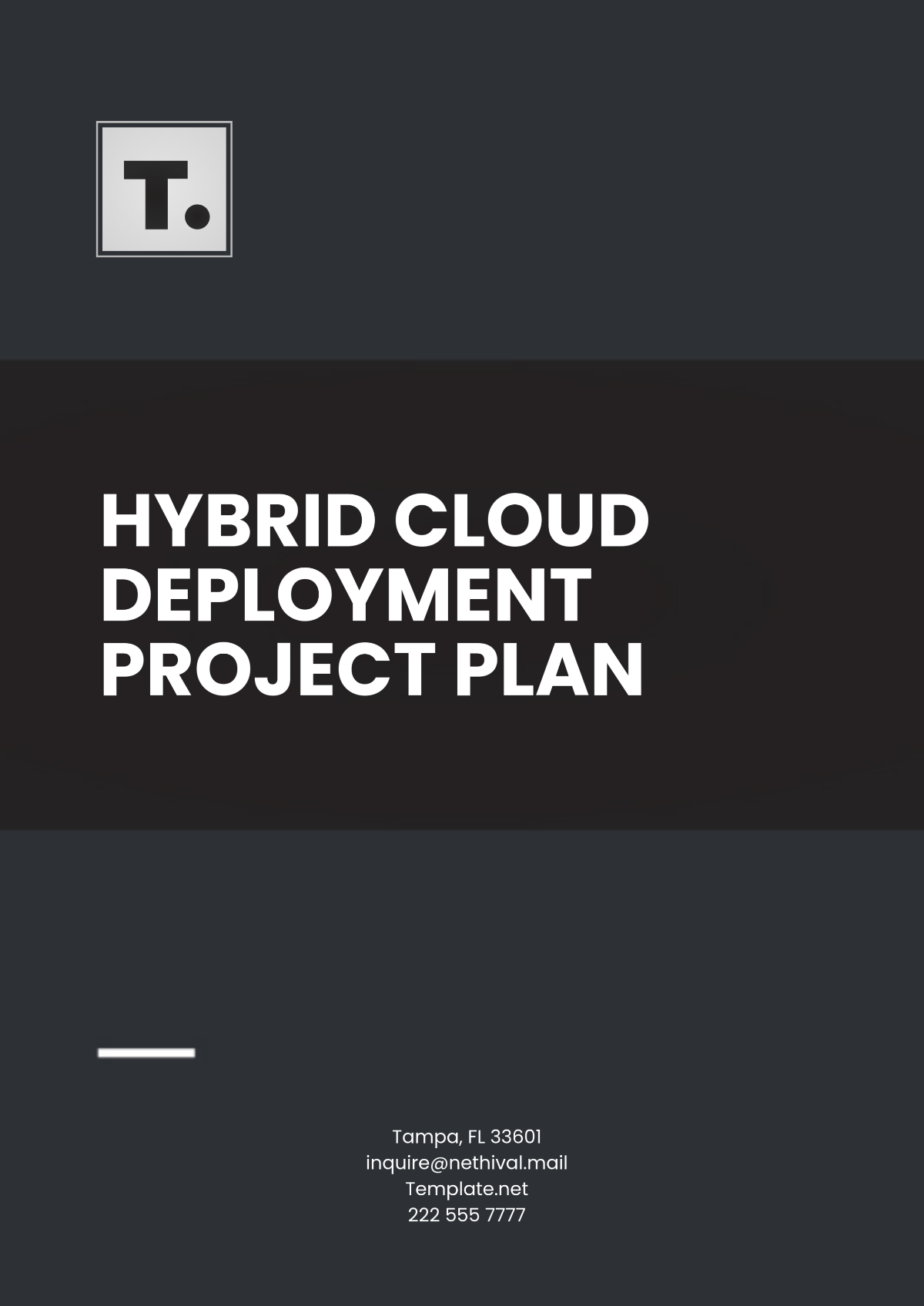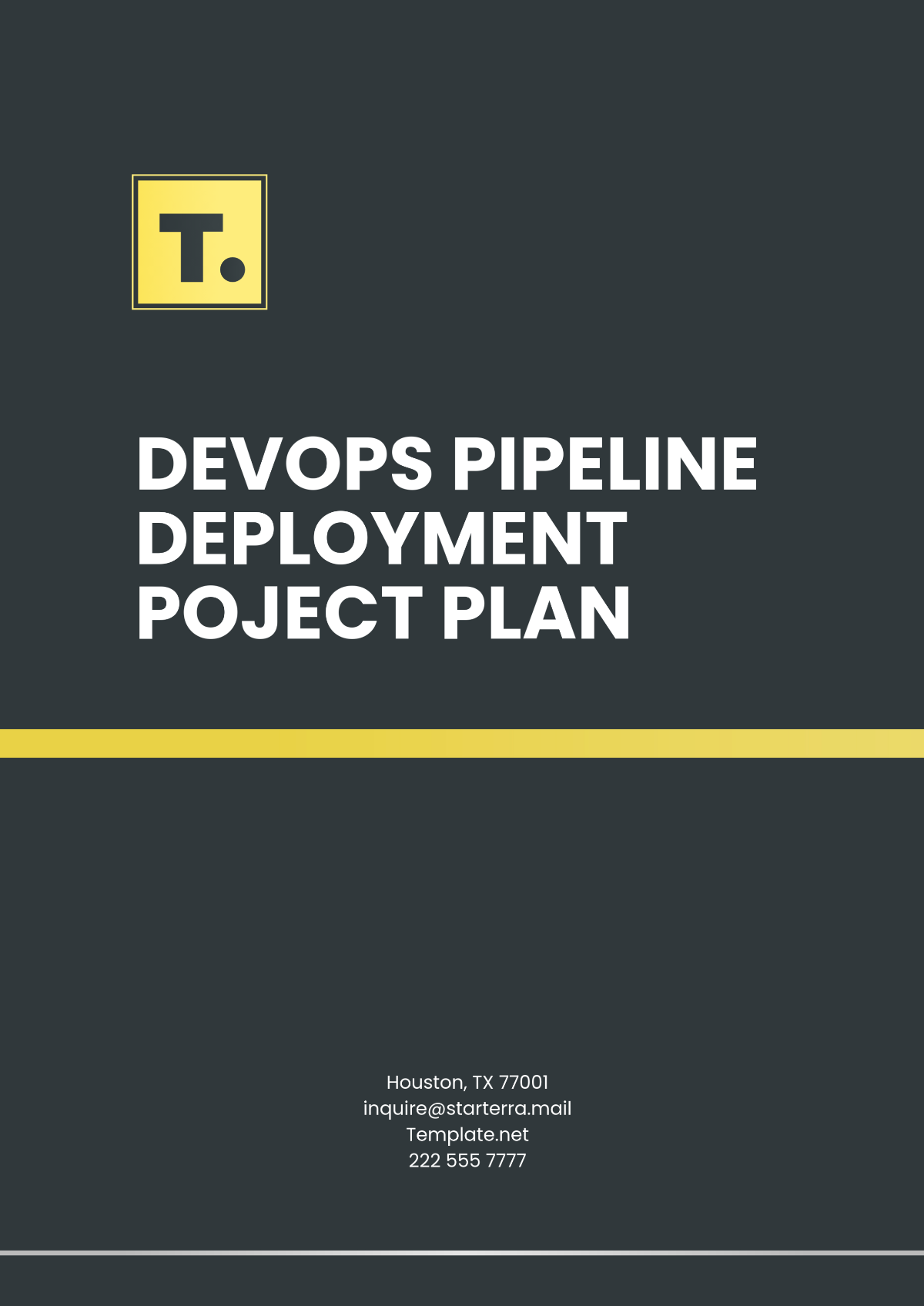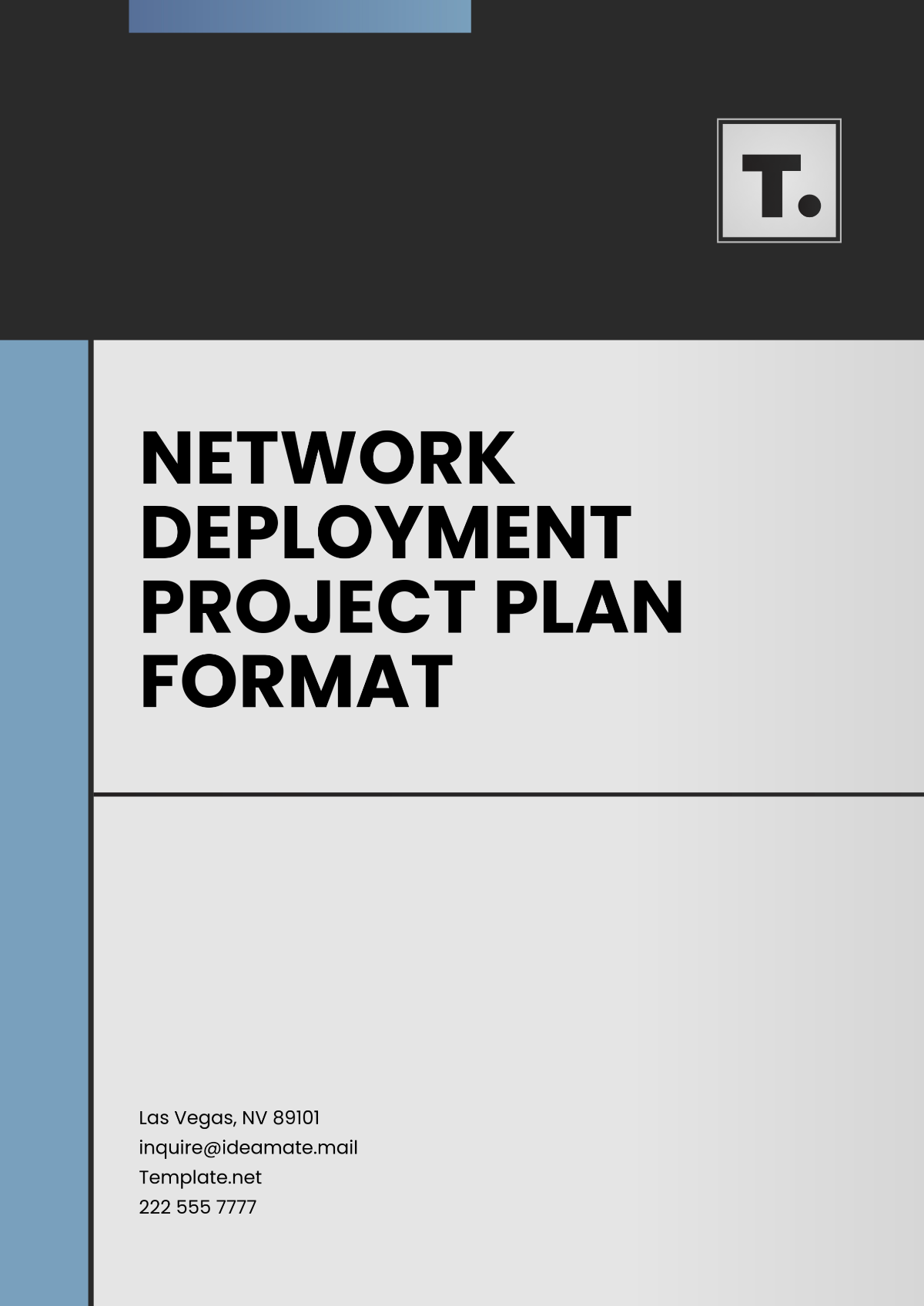Agriculture Project Plan
I. Executive Summary
This Agriculture Project Plan outlines the strategic approach of [Your Company Name] to enhance agricultural productivity and sustainability. The plan focuses on key areas such as crop yield improvement, water usage efficiency, soil health enhancement, and stakeholder engagement. The project aims to achieve significant advancements in farming practices, supported by a detailed budget allocation, robust risk management strategies, and a clear timeline for implementation.
The project's success will position [Your Company Name] as a leader in sustainable agriculture, delivering long-term benefits for the company, its employees, and the community. Through continuous monitoring, evaluation, and improvement, the project will drive progress towards achieving its objectives and setting new standards in the agricultural industry.
Key details include a total project budget of $2,500,000, with specific allocations for soil health improvements, water usage efficiency, precision agriculture technologies, employee training, and stakeholder engagement initiatives. The project timeline spans three years, with measurable targets for crop yield increases, water usage reductions, and soil health enhancements.
II. Project Objectives
A. Increase Crop Yield
Adopt Advanced Farming Techniques: Implement advanced farming techniques, such as precision agriculture, to optimize crop yield and improve resource efficiency. This involves using GPS technology, sensors, and data analytics to enhance planting, irrigation, and harvesting processes.
Enhance Soil Health: Improve soil health through the use of organic amendments, crop rotation, and cover cropping. Healthy soil increases nutrient availability, water retention, and resilience against pests and diseases.
Improve Water Management: Optimize water usage through efficient irrigation systems and water-saving practices. Proper water management ensures that crops receive adequate hydration without wastage.
Use High-Quality Seeds: Select and plant high-quality, disease-resistant seed varieties to maximize crop yield and reduce losses due to pests and diseases.
Monitor and Analyze Data: Continuously monitor and analyze crop performance data to identify areas for improvement and implement corrective measures as needed.
B. Improve Water Usage Efficiency
Install Efficient Irrigation Systems: Upgrade existing irrigation systems to more efficient models that reduce water wastage and ensure even distribution. This includes drip irrigation and automated sprinkler systems.
Implement Water-Saving Practices: Encourage the use of water-saving practices such as mulching, which helps retain soil moisture, and scheduling irrigation based on crop needs and weather conditions.
Monitor Water Usage: Use sensors and meters to monitor water usage and identify areas where efficiency can be improved. Regular monitoring helps detect leaks and optimize irrigation schedules.
Educate Employees: Provide training for employees on water conservation techniques and the importance of efficient water usage. Educated employees can implement and advocate for best practices in water management.
C. Enhance Soil Health
Conduct Soil Testing: Regularly test soil to assess its nutrient content, pH levels, and organic matter. Soil testing helps tailor fertilization and amendment practices to specific soil needs.
Use Organic Amendments: Apply organic amendments such as compost and manure to improve soil structure, nutrient availability, and microbial activity. Organic matter enhances soil fertility and resilience.
Implement Crop Rotation: Practice crop rotation to break pest and disease cycles, improve soil structure, and enhance nutrient availability. Rotating crops diversifies the types of nutrients returned to the soil.
Promote Cover Cropping: Use cover crops to prevent soil erosion, suppress weeds, and enhance soil organic matter. Cover crops provide ground cover and protect the soil during non-growing seasons.
Monitor Soil Health: Continuously monitor soil health metrics to track improvements and adjust management practices as needed. Monitoring helps ensure that soil health strategies are effective.
D. Engage Stakeholders
Internal Stakeholders: Engage employees in project planning and execution to ensure their support and commitment. Regular updates and feedback mechanisms keep employees informed and involved.
External Stakeholders: Develop strong partnerships with suppliers, community members, and regulatory bodies. Regular communication and collaboration build trust and support for the project.
Community Engagement: Engage with the local community to build support for the project and address any concerns. Community meetings and outreach programs foster positive relationships.
Supplier Partnerships: Establish clear contract agreements with suppliers and conduct regular performance reviews. Strong supplier relationships ensure timely delivery of materials and services.
III. Project Timeline
The following table outlines the project timeline, including key milestones and activities for each phase of the project:
No. | Phase | Activities | Timeline |
|---|---|---|---|
1 | Planning | Project planning, resource allocation, and kickoff | Months 1-3 |
2 | Soil Health | Soil testing, organic amendments, crop rotation | Months 4-12 |
3 | Water Efficiency | Install irrigation systems, implement water-saving | Months 13-24 |
4 | Precision Agriculture | Procure equipment, train employees, data analysis | Months 25-36 |
5 | Monitoring & Evaluation | Track KPIs, continuous improvement, reporting | Ongoing |
A. Planning
Project Planning: Develop detailed project plans, including objectives, timelines, and resource requirements. This phase sets the foundation for successful project execution.
Resource Allocation: Allocate necessary resources, including budget, personnel, and equipment, to ensure smooth project execution. Proper resource allocation is crucial for achieving project goals.
Project Kickoff: Conduct a project kickoff meeting to align all stakeholders on objectives, timelines, and roles. Clear communication at the start ensures everyone is on the same page.
Stakeholder Engagement: Begin engaging internal and external stakeholders to build support and collaboration for the project. Early engagement helps address any concerns and fosters buy-in.
B. Soil Health
Soil Testing: Conduct comprehensive soil tests to establish baseline metrics and inform soil health improvement practices. Understanding soil conditions helps tailor management strategies.
Apply Organic Amendments: Use compost, manure, and other organic amendments to enhance soil structure and fertility. Organic matter improves soil health and crop performance.
Implement Crop Rotation: Rotate crops to prevent pest and disease buildup and improve soil structure. Crop rotation diversifies nutrient inputs and benefits soil health.
Introduce Cover Cropping: Plant cover crops to protect soil during off-seasons and improve organic matter. Cover crops prevent erosion and enhance soil fertility.
C. Water Efficiency
Install Irrigation Systems: Upgrade to efficient irrigation systems such as drip irrigation and automated sprinklers. Efficient systems reduce water wastage and ensure even distribution.
Implement Water-Saving Practices: Use practices like mulching and scheduled irrigation to conserve water. Water-saving practices enhance efficiency and sustainability.
Monitor Water Usage: Continuously monitor water usage with sensors and meters to identify areas for improvement. Monitoring helps optimize irrigation schedules and detect leaks.
Employee Training: Train employees on water conservation techniques and the importance of efficient water usage. Educated employees can implement best practices in water management.
D. Precision Agriculture
Procure Equipment: Acquire precision agriculture equipment such as GPS-guided tractors and sensors. Advanced equipment enhances farming efficiency and data collection.
Train Employees: Provide training for employees on the use of precision agriculture technologies. Proper training ensures effective use and maintenance of equipment.
Data Collection: Collect and analyze data from precision agriculture technologies to inform decision-making. Data-driven decisions improve farming practices and outcomes.
Continuous Improvement: Use data analysis to continuously improve farming practices and address any issues. Continuous improvement ensures ongoing efficiency and productivity.
E. Monitoring & Evaluation
Track KPIs: Monitor key performance indicators (KPIs) to measure progress and identify areas for improvement. Regular tracking helps maintain project alignment with goals.
Continuous Improvement: Implement strategies for continuous improvement based on KPI data and stakeholder feedback. Continuous improvement ensures long-term project success.
Reporting: Prepare regular reports to update stakeholders on project progress, challenges, and successes. Transparent reporting fosters trust and collaboration.
Feedback Loop: Establish a feedback loop with stakeholders to gather input and address concerns promptly. Effective communication enhances project adaptability and responsiveness.
IV. Budget Allocation
The following chart and table outline the budget allocation for the plan, including specific amounts for key activities:
No. | Activity | Budget |
|---|---|---|
1 | Soil Health Improvements | $500,000 |
2 | Water Usage Efficiency | $500,000 |
3 | Precision Agriculture Technologies | $750,000 |
4 | Employee Training | $250,000 |
5 | Stakeholder Engagement | $250,000 |
6 | Monitoring and Evaluation | $250,000 |
Total | $2,500,000 |
A. Soil Health Improvements
Organic Amendments: Allocate $200,000 for the purchase and application of organic amendments such as compost and manure. These amendments improve soil fertility and structure.
Soil Testing: Set aside $100,000 for regular soil testing to monitor soil health and inform management practices. Soil testing provides essential data for decision-making.
Crop Rotation: Budget $100,000 for implementing crop rotation practices to enhance soil health and prevent pest and disease buildup. Crop rotation diversifies nutrient inputs.
Cover Cropping: Reserve $100,000 for introducing cover crops to protect soil during off-seasons and improve organic matter. Cover crops prevent erosion and enhance soil fertility.
B. Water Usage Efficiency
Irrigation Systems: Allocate $300,000 for the installation of efficient irrigation systems such as drip irrigation and automated sprinklers. Efficient systems reduce water wastage.
Water-Saving Practices: Budget $100,000 for implementing water-saving practices like mulching and scheduled irrigation. Water-saving practices enhance efficiency.
Water Monitoring: Set aside $50,000 for water usage monitoring equipment such as sensors and meters. Monitoring helps optimize irrigation schedules.
Employee Training: Reserve $50,000 for training employees on water conservation techniques. Educated employees can implement best practices in water management.
C. Precision Agriculture Technologies
Equipment Procurement: Allocate $400,000 for the purchase of precision agriculture equipment such as GPS-guided tractors and sensors. Advanced equipment enhances farming efficiency.
Employee Training: Budget $200,000 for training employees on the use of precision agriculture technologies. Proper training ensures effective use and maintenance of equipment.
Data Analysis: Set aside $100,000 for data collection and analysis to inform decision-making. Data-driven decisions improve farming practices and outcomes.
Continuous Improvement: Reserve $50,000 for continuous improvement initiatives based on data analysis. Continuous improvement ensures ongoing efficiency and productivity.
D. Employee Training
Training Programs: Allocate $100,000 for developing and implementing comprehensive training programs for employees. Training programs ensure that employees have the necessary skills and knowledge.
Workshops and Seminars: Budget $50,000 for organizing workshops and seminars on best practices in agriculture. Workshops and seminars provide opportunities for learning and networking.
Online Courses: Set aside $50,000 for providing access to online courses and resources. Online courses offer flexibility and convenience for employee training.
Certification Programs: Reserve $50,000 for enrolling employees in certification programs related to sustainable agriculture. Certification programs enhance employee credentials and expertise.
E. Stakeholder Engagement
Community Outreach: Allocate $100,000 for community outreach programs to build support and collaboration with local stakeholders. Community outreach fosters positive relationships.
Stakeholder Meetings: Budget $50,000 for regular stakeholder meetings to discuss project progress and address concerns. Regular meetings ensure transparent communication.
Information Dissemination: Set aside $50,000 for distributing information about the project to stakeholders through newsletters and reports. Information dissemination keeps stakeholders informed.
Feedback Collection: Reserve $50,000 for collecting feedback from stakeholders to improve project implementation. Feedback collection ensures that stakeholder concerns are addressed.
F. Monitoring and Evaluation
KPI Tracking: Allocate $100,000 for tracking key performance indicators to measure project progress. KPI tracking provides valuable data for decision-making.
Continuous Improvement: Budget $50,000 for continuous improvement initiatives based on KPI data and feedback. Continuous improvement ensures long-term project success.
Reporting: Set aside $50,000 for preparing and distributing regular reports to stakeholders. Reporting keeps stakeholders informed about project developments.
Feedback Loop: Reserve $50,000 for establishing a feedback loop with stakeholders to gather input and address concerns. A feedback loop enhances project adaptability.
V. Risk Management
The following table outlines the key risks associated with the Agriculture Project Plan and the mitigation strategies to address them:
No. | Risk | Mitigation Strategy |
|---|---|---|
1 | Weather Variability | Implement weather monitoring systems and adaptive practices. |
2 | Pest Infestations | Adopt integrated pest management (IPM) practices. |
3 | Market Fluctuations | Diversify crops and establish forward contracts. |
4 | Regulatory Changes | Stay informed on regulations and adjust practices. |
5 | Equipment Malfunctions | Implement regular maintenance and have backup equipment. |
A. Weather Variability
Monitoring Systems: Install weather monitoring systems to provide real-time data on weather conditions. Accurate data helps make informed decisions and adapt practices.
Adaptive Practices: Develop adaptive farming practices to respond to changing weather patterns. Flexibility in practices helps mitigate the impact of adverse weather.
Diversify Crops: Diversify crop selection to reduce the risk associated with weather variability. Different crops have varying tolerances to weather conditions.
Insurance Coverage: Obtain insurance coverage to protect against financial losses due to extreme weather events. Insurance provides a safety net for the business.
Community Collaboration: Collaborate with local communities and organizations to share resources and knowledge on weather adaptation strategies.
B. Pest Infestations
Integrated Pest Management: Adopt integrated pest management (IPM) practices to reduce reliance on chemical pesticides and minimize environmental impact. IPM combines biological, cultural, and chemical controls.
Regular Monitoring: Implement regular pest monitoring to detect infestations early and take timely action. Early detection prevents widespread damage.
Biological Controls: Use biological control agents such as beneficial insects to manage pest populations sustainably. Biological controls reduce the need for chemical pesticides.
Training: Train employees on IPM techniques and the importance of pest monitoring. Educated employees can implement IPM practices effectively.
C. Market Fluctuations
Diversify Crops: Diversify the range of crops grown to reduce dependence on any single market. Crop diversification spreads risk and provides multiple revenue streams.
Forward Contracts: Establish forward contracts with buyers to secure stable prices and reduce market volatility. Forward contracts provide financial predictability.
Market Analysis: Conduct regular market analysis to stay informed about market trends and demands. Market analysis helps make informed decisions on crop selection and pricing.
Flexible Pricing: Implement flexible pricing strategies to respond to market changes. Flexibility in pricing helps maximize revenue and manage risks.
D. Regulatory Changes
Stay Informed: Regularly monitor and stay informed about changes in agricultural regulations. Staying informed ensures compliance and proactive adaptation.
Adjust Practices: Adjust farming practices to comply with new regulations and standards. Compliance with regulations avoids legal issues and penalties.
Engage with Authorities: Engage with regulatory authorities to provide input on proposed changes and understand their implications. Engagement helps influence policy decisions.
Employee Training: Train employees on regulatory compliance and the importance of following best practices. Educated employees ensure adherence to regulations.
E. Equipment Malfunctions
Regular Maintenance: Implement a regular maintenance schedule for all equipment to ensure proper functioning. Regular maintenance prevents breakdowns and extends equipment life.
Backup Equipment: Maintain backup equipment to minimize downtime in case of malfunctions. Backup equipment ensures continuity of operations.
Employee Training: Train employees on proper equipment use and maintenance procedures. Educated employees can operate and maintain equipment effectively.
Supplier Agreements: Establish agreements with suppliers for quick access to replacement parts and technical support. Supplier agreements ensure timely resolution of equipment issues.
VI. Stakeholder Communication Plan
The following table outlines the communication plan for engaging stakeholders throughout the plan:
No. | Stakeholder | Communication Method | Frequency |
|---|---|---|---|
1 | Employees | Meetings, newsletters | Monthly |
2 | Suppliers | Emails, site visits | Quarterly |
3 | Community Members | Public forums, social media | Biannually |
4 | Regulatory Authorities | Reports, consultations | As needed |
5 | Investors | Financial reports, briefings | Quarterly |
A. Employees
Regular Meetings: Hold regular meetings to update employees on project progress and address any concerns. Meetings provide a platform for open communication and feedback.
Newsletters: Distribute newsletters to keep employees informed about project milestones, achievements, and upcoming activities. Newsletters ensure consistent communication.
Training Sessions: Conduct training sessions to educate employees on new practices and technologies. Training ensures that employees have the necessary skills and knowledge.
Feedback Mechanisms: Implement feedback mechanisms to gather input from employees and make necessary adjustments. Feedback helps improve project implementation.
Intranet Updates: Use the company intranet to post regular updates and resources related to the project. The intranet provides easy access to information.
B. Suppliers
Regular Emails: Send regular emails to suppliers to update them on project needs and expectations. Emails ensure clear and timely communication.
Site Visits: Conduct site visits to evaluate supplier performance and build strong relationships. Site visits provide an opportunity for hands-on assessment and collaboration.
Performance Reviews: Schedule regular performance reviews with suppliers to ensure quality and timely delivery of goods and services. Performance reviews help maintain high standards.
Contracts and Agreements: Establish clear contracts and agreements with suppliers to outline terms and expectations. Contracts provide a legal framework for the partnership.
C. Community Members
Public Forums: Organize public forums to engage with community members and provide updates on the project. Forums offer a platform for dialogue and addressing concerns.
Social Media: Use social media platforms to share project updates and engage with the community. Social media allows for real-time communication and broad reach.
Community Outreach: Conduct community outreach programs to build positive relationships and support for the project. Outreach programs demonstrate commitment to the community.
Feedback Surveys: Distribute feedback surveys to gather input from community members and make necessary adjustments. Surveys provide valuable insights and feedback.
D. Regulatory Authorities
Regular Reports: Submit regular reports to regulatory authorities to demonstrate compliance and provide updates on project progress. Reports ensure transparency and accountability.
Consultations: Engage in consultations with regulatory authorities to understand requirements and provide input on proposed changes. Consultations help influence policy decisions.
Site Inspections: Host site inspections to showcase compliance with regulations and best practices. Inspections build trust and credibility with authorities.
Compliance Documentation: Maintain thorough documentation of compliance activities and practices. Documentation ensures readiness for audits and reviews.
E. Investors
Financial Reports: Provide regular financial reports to investors to keep them informed about project expenditures and financial performance. Reports ensure transparency and accountability.
Briefings: Conduct briefings to update investors on project milestones, achievements, and challenges. Briefings provide an opportunity for direct communication and feedback.
Annual Reports: Include project updates in the company's annual reports to highlight progress and impact. Annual reports provide a comprehensive overview of the project's status.
Investor Meetings: Schedule regular meetings with investors to discuss project progress and address any concerns. Meetings build trust and confidence in the project.
Effective stakeholder communication is crucial for the success of the Agriculture Project Plan. By maintaining regular, transparent, and consistent communication with all stakeholders, [Your Company Name] can build trust, support, and collaboration for the project.
VII. Key Performance Indicators (KPIs)
The following table outlines the key performance indicators (KPIs) for the Agriculture Project Plan, including specific metrics to measure success:
No. | KPI | Metric | Target |
|---|---|---|---|
1 | Crop Yield | Tons per hectare | 10% increase |
2 | Water Usage Efficiency | Liters per hectare | 20% reduction |
3 | Soil Health | Organic matter content | 15% increase |
4 | Employee Training | Number of training sessions conducted | 12 per year |
5 | Budget Adherence | Percentage of budget utilized | 100% |
A. Crop Yield
Measurement: Measure crop yield in tons per hectare to assess productivity. Accurate measurement helps track progress and identify areas for improvement.
Target Increase: Aim for a 10% increase in crop yield through improved farming practices and technologies. Higher yield contributes to increased profitability and food security.
B. Water Usage Efficiency
Measurement: Measure water usage in liters per hectare to evaluate efficiency. Efficient water usage minimizes waste and conserves valuable resources.
Target Reduction: Target a 20% reduction in water usage through the adoption of water-saving practices and efficient irrigation systems. Reduced water usage supports sustainability goals.
C. Soil Health
Measurement: Measure organic matter content in soil to assess health and fertility. Improved soil health enhances nutrient availability and supports robust crop growth.
Target Increase: Aim for a 15% increase in organic matter content through soil health improvement practices. Enhanced soil health promotes long-term sustainability and resilience.
D. Employee Training
Measurement: Track the number of training sessions conducted for employees on new technologies and practices. Training ensures that employees are equipped with the necessary skills.
Target Sessions: Conduct a minimum of 12 training sessions per year to continually enhance employee knowledge and proficiency. Well-trained employees contribute to operational excellence.
E. Budget Adherence
Measurement: Monitor the percentage of the budget utilized to manage project expenditures effectively. Adhering to the budget ensures financial accountability and resource allocation.
Target Utilization: Maintain 100% budget adherence to prevent cost overruns and maximize the efficiency of resource allocation. Effective budget management supports project sustainability.
Monitoring and evaluation are essential for the success of the Agriculture Project Plan. By tracking key performance indicators and implementing continuous improvement initiatives, [Your Company Name] can ensure the project achieves its objectives and delivers value.
VIII. Conclusion and Next Steps
A. Conclusion
This Agriculture Project Plan of [Your Company Name] outlines a comprehensive strategy to enhance agricultural productivity, sustainability, and stakeholder engagement. By focusing on key areas such as crop yield improvement, water usage efficiency, soil health enhancement, and stakeholder communication, the project aims to achieve significant advancements in farming practices.
Through meticulous planning, robust implementation, and continuous monitoring, [Your Company Name] is well-positioned to achieve its objectives and set new benchmarks in the agricultural industry. The project's success will not only benefit the company but also contribute to environmental stewardship and community development.
B. Next Steps
Monitor and Evaluate: Continuously monitor KPIs and project performance to track progress and make data-driven adjustments as necessary.
Enhance Stakeholder Engagement: Strengthen relationships with stakeholders through ongoing communication and collaboration initiatives.
Innovate and Adapt: Embrace innovation and adapt to changing agricultural landscapes to maintain competitiveness and sustainability.
By adhering to the project plan and adapting to evolving circumstances, [Your Company Name] will pave the way for sustainable growth, resilience, and success in the agriculture sector.




















